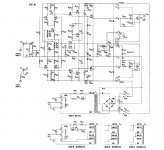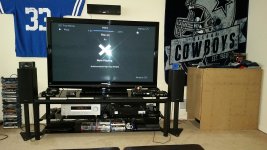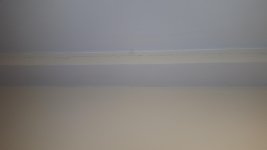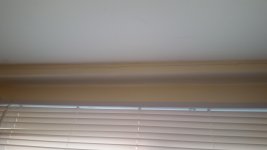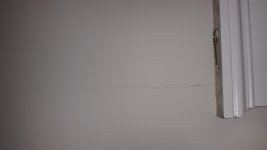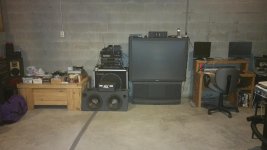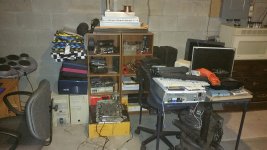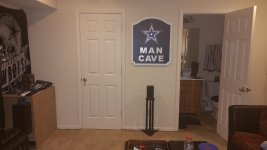About the only parameter that matters much is the driver's resonance because that defines how low you can go.
This is one of the most blatantly untrue statements I've ever seen on the internet. As weltersys already pointed out fs has nothing to do with how low you can go. If you have even a basic concept of how to design an enclosure or have even the most primitive eq you can come up with incredibly different response curves for any given driver.
But even in a simple sealed box a driver with qts = 0.2 will have a dramatically different response curve (and f3) than a driver with qts = 1.2, and you can find drivers with both of those qts values readily available all over the internet.
Aside from that, there's a whole lot of incorrect assumptions about drivers targeted to different markets going on in this discussion.
One of the finest drivers on the planet is made by Rockford Fosgate, and we all know they are a car audio company. Check this thing out, it doesn't get a whole lot better than this thing - Data-Bass
That driver should clear up a lot of misconceptions about car audio by itself.
But in case there's some lingering doubt, let's look at Kicker. This is usually a pretty highly regarded brand, even among people that don't particularly care much for car audio. Kicker makes some pretty mediocre products, recommends absolutely terrible enclosures for these products, and sells them at several times the price they are worth.
Kicker's claim to fame is using ridiculously high q drivers in ridiculously small boxes that give a ridiculously obnoxious peak (as high as 10 db or more peak) around 40 - 60 hz, which is the pure definition of one note bass. This is a fantastic way to win car audio spl competitions and it's also a fantastic way to get people that love music to hate car audio and everything it stands for.
Let's be realistic people, the distinction between "car audio" and "home audio" drivers is largely defined by who makes the product and who it's marketed to. Tang Band makes it's living off of selling "car audio" type drivers to the home audio market. Almost invariably Tang Band sub drivers are high(ish) xmax, high(ish) fs drivers designed to work well in incredibly small boxes, so much so that it's often hard to design tradition alignments for them because the box has to be too small and the port has to be too large. At the same time, "car audio" drivers like the linked Rockford and a lot of the new Alpine lineup work equally well in a home or car setting simply because they are very good drivers.
There's a lot of garbage car audio products. Being literal garbage they won't work really well in any environment. This is largely where the bias against car audio products comes from (not to mention the typical Kicker design philosophy that produces subwoofers that are good for nothing but spl competitions) but it's pure ignorance to assume the entire car audio market is junk or even to assume it's suited mainly to car audio usage or even to assume that any given "car audio" driver will be significantly different than any given "home audio" driver. There's a tremendous range in the specs of drivers and making assumptions about them based on who they are marketed to instead of their specs and physical characteristics is pure folly.
Last edited:
You're just plain unlucky. Here's what a respected reviewer said about the amp:2) My 35+ year old vintage Hafler DH-200 amplifier, inexpensively purchased around 20 years ago, started leaking a bit of DC output on the right channel a few years ago. As it was only a small fraction of a volt when I first measured it, I was not concerned, but last Tuesday (9/13/16) it burned out the right woofer in my 20+ year Tannoy PBM 6.5 near field studio monitor
"The amplifier tested here was purchased used in 1986 in Thousand Oaks, and I'm testing it today in 2014. It still easily exceeds its specifications nearly 30 years later, and I doubt it's ever been serviced."
Your bad luck aside, there's also your choice of amp. Kind of funny to think your vintage amp (1979?) with a huge coupling capacitor at the output is a suitable amp to connect to delicate (but wonderful) British speakers. Might have saved Hafler some bucks back then, but dual power supplies and no output caps are the rule even years ago (OK... some Class D are a bit different).
Yes, anybody can put a 5 Hz bully-EQ signal into any driver they please. But I'll stick with the thought that the driver's free air resonance parameter tells you how low you are headed and how low you can go with EQ on a driver of that heft too.
When I think of some long-winded posters, I think of some poor underemployed sad-sack in his folks basement who "gets no respect" in life. (I am not referring here to weltersys who has a long career in professional audio.) Are they making "a life" out of being mindlessly argumentative about trivial matters?
Ben
Last edited:
When I think of some long-winded posters, I think of some poor underemployed sad-sack in his folks basement who "gets no respect" in life. (I am not referring here to weltersys who has a long career in professional audio.) Are they making "a life" out of being mindlessly argumentative about trivial matters?
Ben
No need to point out you weren't talking about weltersys, everyone knows exactly who you are talking about.
I'm here to let you know that it's ok to directly respond to my posts with some actual technical responses, you don't have to constantly make these passive aggressive back handed personal comments, if this is the best you can do you don't belong on a scientifically based forum.
The distinction between a 0.2 and 1.2 qts driver is not mindlessly argumentative. If you would actually simulate or measure stuff to get a technical background on what you are talking about it would save a lot of time for everyone that has to constantly correct your endless stream of misinformation.
If you actually were to perform this experiment you would see that fs on it's own doesn't tell you much about a driver's characteristics or how low can go.
Your incredibly uselessly oversimplified design routine (pick a driver with a low fs and put it in a large sealed box and that's the only two things to worry about) is a recipe for unexpected issues and it's time for you to study a bit about the basic theory and concepts involved.
Umm, I now think I am wrong about capacitor and power supply. That's how I interpreted "leaky" in earlier post but did not dig up Hafler circuit diagram to know for sure before posting. Well, back to living in my parents basement for penance. Sorry....with a huge coupling capacitor at the output....
Ben
Last edited:
Right, you were wrong, and also wrong about the country my Tannoys were made in 😉.Umm, I now think I am wrong about capacitor and power supply. That's how I interpreted "leaky" in earlier post but did not dig up Hafler circuit diagram to know for sure before posting. Well, back to living in my parents basement for penance. Sorry.
Ben
You can peruse the Hafler DH-200 (I think mine is from 1972) advert here, complete with John Roberts thoughts on what is causing the problem (cold solder, not dried up PSU caps as I would have guessed):
Hafler DH-200 Amplifier
And the schematic below.
I have replaced the Hafler DH-200 with a class D amp made in China that has DC protection on the outputs, and replaced the burnt (with 7 watts..) "Made in Canada" Tannoy PBM 6.5 woofer last night.
Unfortunately, one of the matched pair I bought to replace both the blown and good woofer had a hole poked in it, so I'm using a "tenderized" surround woofer on the right side and my 20 year old, but brand new looking/sounding woofer on the other side. If I can fix the little rip without adding too much weight, I'll probably swap in the other "tenderized" woofer in to the left Tannoy.
The seller is a straight up good guy- he refunded the cost of both drivers, so the replacement only cost $18 in shipping, so I can't complain.
Art
Attachments
Last edited:
I have the Yamaha AVR at -6 for the sub and I rarely go over 40 on the Pioneer AVR. All the walls are cracked. The wall outside the master bedroom upstairs is cracked. The sub has been running since 2012. The latest Star Wars movie is the 1st bluray to cause the Yamaha AVR to shutoff. I had to keep the Pioneer AVR at 35 for 3/4 of the movie.
Last edited:
Hi BP1Fanatic,
Post #28: "...All the walls are cracked..."
Looks like a powerful sub. The cracking is what's been holding me back from even turning my meager subs up.
Regards,
Post #28: "...All the walls are cracked..."
Looks like a powerful sub. The cracking is what's been holding me back from even turning my meager subs up.
Regards,
The killing part is I'm only feeding it 100-200 watts. The box is designed for the Kicker 08S15L74 to reach 16mm xmax at 1,000 watts.
I've been using car subs for about 16yrs now. I first started out in 2000 with two Alpine Bass 200 10in subs in a 4 port arrangement. I used this with a Jaycar 250w? sub plate amp and in near field under the coffee table in front of me I giggled like a school girl with the fact it worked for one and worked well! I copied a design from a magazine at that stage. Next up was the Earthquake Magma 12's. I used one in each 1cuft cab with there PR's and driving them with a 450wrms again Jaycar amp I ran that amp at around 3ohms (4ohm stable) and I could almost cook a steak on the heatsink! Funnily enough it lasted around 5yrs before dying after a relocation...
Anyway....as far as car 12v amps go I recently tested my Earthquake 200dhc with a step down power supply setup of four 22amp converters in series? The amp to my horror exploded after the 2nd day of testing. I later realised that the power supply was only putting out 10v at anything above 55amps so I'm not sure (was rated to 90amps at 13.5v) why as I'm no boffen!?
There is a pommy bloke on YouTube who runs two intel server power supplies and gets bulk stable volt and amperage (380amp?). He's Britain's Digital Design distributor if that helps!
Anyway....as far as car 12v amps go I recently tested my Earthquake 200dhc with a step down power supply setup of four 22amp converters in series? The amp to my horror exploded after the 2nd day of testing. I later realised that the power supply was only putting out 10v at anything above 55amps so I'm not sure (was rated to 90amps at 13.5v) why as I'm no boffen!?
There is a pommy bloke on YouTube who runs two intel server power supplies and gets bulk stable volt and amperage (380amp?). He's Britain's Digital Design distributor if that helps!
Sometimes, I run a 40 amp power supply on 1 of my car amps on a Yamaha 18 PA sub in my 2nd man cave.
- Status
- Not open for further replies.
- Home
- Loudspeakers
- Subwoofers
- Why not car sub driver and amp?
